Cherry tomatoes may be small, but they require some specialized pruning techniques to maximize their productivity within limited space. Properly trimming back these compact, heavily fruiting plants allows for better light exposure, air circulation, and disease prevention. This guide will walk through the key aspects of how to prune cherry tomatoes.
An Overview of Cherry Tomatoes
When to Prune Cherry Tomatoes
As a cherry tomato growers, it is important to know that proper pruning is essential for promoting healthy growth, increasing yields, and preventing disease in their cherry tomato plants. As an expert in the field, I will discuss the best times for pruning cherry tomatoes throughout the growing season.
At Planting Time
When transplanting seedlings, it’s advisable to prune away any damaged or yellowing leaves from the lower portion of the stem. This initial pruning not only removes potential sources of disease but also encourages the plant to direct its energy towards establishing a strong root system and vigorous top growth.
Establishing a Sturdy Framework
Once the cherry tomato plant has developed 4-6 main stems, it’s time for the first major pruning. Carefully assess the strength and positioning of each stem, and remove any weaker or overcrowded ones. This strategic pruning will ensure that the plant’s resources are focused on the most vigorous leaders, resulting in a sturdy, well-ventilated plant structure.
Ongoing Maintenance Throughout the Season
As the cherry tomato plant continues to grow, new side shoots (known as suckers) will emerge from the leaf axils. Pinching off these suckers is crucial for directing the plant’s energy towards ripening the fruit on the established stems. Consistent pruning of suckers throughout the growing season will not only improve air circulation and reduce disease risk but also increase overall fruit production.
End-of-Season Cleanup
After the final harvest, it’s essential to remove all remaining foliage and stems from the cherry tomato plant. This practice helps prevent the overwintering of pests and diseases, ensuring a clean slate for the next growing season. However, actively blooming trusses should be left intact to avoid reducing the potential fruit yield.
Seasonal Variations
It’s important to note that pruning techniques may vary slightly depending on the time of year and the plant’s growth stage. During the peak growing season, when the plant is actively producing fruit, pruning should be more conservative to avoid excessive stress. However, in the dormant seasons, more aggressive pruning can be beneficial to promote new growth and maintain a compact, manageable plant structure.
By following these expert pruning timings, you can optimize your plants’ health, productivity, and overall performance. Remember, proper pruning is not only an art but also a science, and mastering it can lead to an abundant harvest of sweet, juicy cherry tomatoes for years to come.
Tools Needed for Pruning Cherry Tomatoes
Having quality tools makes pruning tasks much easier:
- Bypass Hand Pruners – Make clean cuts on thicker stems
- Small Snips – Quickly trim back delicate growth
- Tomato Knife – Sharp blade ideal for harvesting and pruning
- Disinfectant Spray – Prevent the spreading of diseases
- Gardening Gloves – Protect hands from sap and thorns
- Tote Bag – For collecting and discarding clippings
Sharpen tools before each use for best results.
7 Best Top Rated Electric Hedge Trimmers – A Detailed Buying Guide
How to Prune Cherry Tomatoes
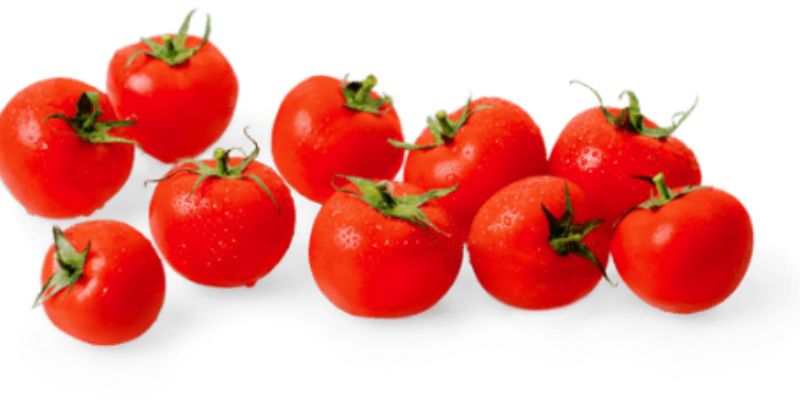
Follow these methods to keep plants productive in limited space:
Step 1. Remove Lower Leaves and Stems
Trim vegetation touching the ground to prevent bottom rot and improve air movement.
Step 2. Choose the Most Robust Main Branches
Select 3-5 well-positioned leaders and prune competing shoots to guide plant energy.
Step 3. Pinch off Interior Suckers
Continually pinch back new foliage emerging inside plants and on established branches to minimize crowding.
Step 4. Train Remaining Stems Outward
Gently weave leaders along supports in opposite directions so light can easily reach developing fruit.
Step 5. Cut Back Overly Dense Areas
Strategically prune zones that become too bushy to open the plant canopy for better fruit ripening.
Properly thinning dense cherry tomato foliage pays off with higher-quality yields.
How to Prune Cherry Tomatoes: Mistakes to Avoid
While proper pruning is essential for maximizing yields and promoting plant health, there are certain mistakes that even experienced gardeners should strive to avoid when it comes to pruning cherry tomato plants. As an expert in the field, allow me to shed light on some common pitfalls and provide valuable insights on what not to prune.
Leaf Removal: A Delicate Balance
One of the most common errors in pruning cherry tomatoes is removing too many leaves. While it’s important to maintain an open canopy for optimal air circulation, excessive defoliation can have detrimental effects. Leaves play a crucial role in photosynthesis, and removing too many of them can lead to sun-scalded fruits or a slower ripening process, ultimately impacting your harvest.
Flowering Trusses: The Essence of Productivity
When pruning cherry tomato plants, it’s crucial to avoid cutting back flowering trusses. These delicate structures are the source of your future tomato crops, and disturbing them can directly reduce your overall yields. As an expert, I recommend leaving all actively flowering trusses intact to ensure a bountiful harvest.
Main Stem Management: Building a Strong Foundation
Another mistake to avoid is topping or cutting back the main stems too early in the plant’s growth cycle. These primary stems form the backbone of your cherry tomato plant, and prematurely removing them can hinder the development of a strong framework needed to support heavy fruit loads. Instead, focus on judiciously pruning side shoots and suckers until the plant has established a sturdy structure.
Diseased Foliage: A Breeding Ground for Trouble
While it’s essential to maintain a well-ventilated canopy, it’s equally important to remove any diseased or damaged foliage promptly. Leaving infected leaves on the plant can spread disease to the upper leaves and fruits, compromising the overall health of your cherry tomato crop. As an expert, I recommend regularly inspecting your plants and promptly removing any affected foliage to prevent the spread of disease.
Respecting the Fruits: Preserving Your Harvest
Finally, one crucial aspect of pruning cherry tomatoes is respecting the fruits themselves. While it’s tempting to prune away any vegetation that appears overcrowded or impeding air flow, be cautious not to remove any fruits that are already developing on the vines. Prioritize lightly trimming only the excess foliage while preserving the precious tomatoes that represent your hard work and potential harvest.
By avoiding these common pitfalls and following expert advice, you can ensure that your pruning efforts are focused on promoting healthy growth, maximizing yields, and cultivating a bountiful cherry tomato harvest season after season.
5 Signs Your Cherry Tomatoes Need Pruning
As an expert in the field of tomato cultivation, I cannot stress enough the importance of timely pruning for cherry tomato plants. Recognizing the subtle signs that indicate the need for pruning can make all the difference in ensuring a bountiful and healthy harvest. Let’s explore the telltale indicators that it’s time to reach for your pruning shears.
1. Struggling Ripening Process
If you notice your cherry tomatoes are taking an unusually long time to ripen, it could be a sign that excess foliage is preventing adequate sunlight from penetrating the plant’s interior. Proper pruning can help thin out the canopy, allowing sunlight to reach the fruits and promote even ripening.
2. Proliferation of Interior Suckers
Cherry tomato plants have a tendency to produce an abundance of new shoots, known as suckers, emerging from the center of the plant. These suckers compete for valuable resources, diverting energy away from fruit production. Regularly pinching back these interior suckers is crucial for redirecting the plant’s efforts towards ripening the existing tomato clusters.
3. Low-Hanging Branches
When the lower branches of your cherry tomato plants begin to touch the ground, it’s a clear sign that pruning is required. These low-lying branches can act as a gateway for soil-borne diseases to spread upwards, potentially compromising the entire plant’s health. Trimming back these branches not only improves air circulation but also reduces the risk of disease transmission.
4. Discolored Foliage
Pale or yellowing leaves on your cherry tomato plants can often indicate nutrient deficiencies or imbalances. These symptoms frequently arise when plants are overcrowded or competing for resources. Pruning can alleviate this issue by creating more breathing room and allowing the plant to better allocate its resources for healthy growth.
5. Stunted Growth
If you notice your cherry tomato plants exhibiting sluggish growth or seeming to stall in their development, it could be a sign that they are expending too much energy on producing excess foliage. Judicious pruning can redirect the plant’s resources towards establishing strong main branches and promoting overall vigor.
By keeping a watchful eye on these telling signs, you can confidently determine the optimal time to prune your cherry tomato plants. Remember, timely and strategic pruning is an essential component of successful cherry tomato cultivation, ensuring a bountiful and flavorful harvest for your efforts.
Benefits of Pruning Cherry Tomato Plants
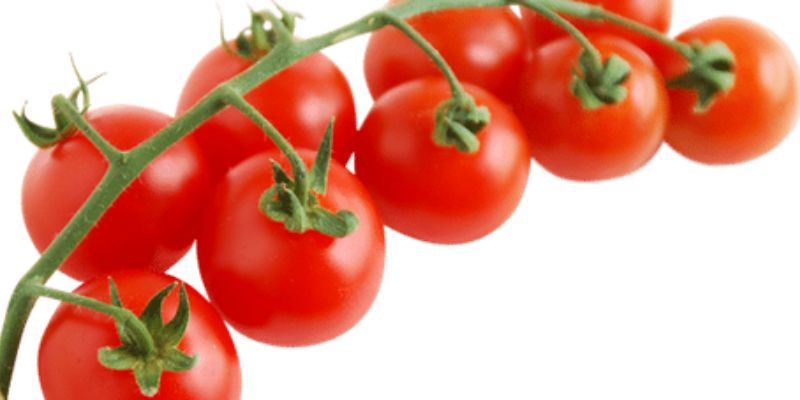
As an expert in the art of tomato cultivation, I cannot emphasize enough the remarkable benefits that come with properly pruning your cherry tomato plants. This essential practice not only enhances the overall health and vigor of your plants but also directly impacts the quality and abundance of your harvest. Here are the transformative advantages that await when you master how to prune cherry tomatoes.
1. Bountiful Yields
One of the most significant benefits of pruning cherry tomato plants is the substantial increase in fruit yield. By selectively removing unnecessary foliage and side shoots, you redirect the plant’s energy towards ripening the abundant clusters of petite tomatoes. This strategic allocation of resources ensures that your plants can focus their efforts on producing a truly impressive harvest.
2. Superior Fruit Quality
In addition to boosting yields, pruning also plays a crucial role in improving the overall quality of your cherry tomatoes. By thinning out the dense canopy, you promote better airflow and light exposure throughout the plant’s interior. This increased access to sunlight and air circulation translates into sweeter, more robust, and flavorful cherry tomatoes that will undoubtedly delight your taste buds.
3. Accelerated Ripening
Another remarkable advantage of pruning cherry tomato plants is the expedited ripening process. By concentrating the plant’s resources into the fruiting trusses, you effectively accelerate the rate at which the tiny tomatoes mature. This not only ensures a steady supply of fresh, ripe cherry tomatoes throughout the growing season but also allows you to enjoy the fruits of your labor sooner.
4. Effective Disease Management
Cherry tomato plants are susceptible to various diseases and pathogens, particularly in dense, overcrowded conditions. Pruning plays a vital role in mitigating these risks by opening up the plant’s interior foliage. This improved air circulation and sunlight penetration create an inhospitable environment for mold, blight, and other harmful pathogens, safeguarding your precious crop from potential threats.
5. Effortless Harvesting
Finally, let’s not overlook the practical benefits of pruning when it comes to harvesting your cherry tomatoes. By eliminating cramped, crossing stems and dense foliage, you create a more accessible and open canopy underneath the plants. This newfound ease of movement not only makes the harvesting process more enjoyable but also ensures that you can cleanly and efficiently pick those ripe, little tomatoes without damaging the plant or its precious fruits.
Alternatives to Pruning Cherry Tomato Plants
While pruning is an age-old practice that yields remarkable benefits for cherry tomato plants, some gardeners may find themselves short on time or seeking lower-maintenance options. As an expert in the field, I understand the unique challenges faced by busy cultivators, which is why I’m excited to share several alternative strategies that can help you achieve a bountiful harvest without the need for extensive pruning.
1. Ultra-Compact Varieties
One of the most convenient alternatives to pruning is choosing ultra-compact cherry tomato varieties. Through selective breeding, plant breeders have developed dwarf cultivars that exhibit a naturally contained growth habit, minimizing the need for frequent pruning. These compact plants are perfect for small-space gardening and require minimal intervention beyond occasional light pruning.
2. Specialized Caging Systems
Another effective solution is to utilize specialized caging systems designed specifically for tomato plants. Conical or cylindrical tomato cages provide built-in spacing and support, allowing for optimal air circulation and light penetration without the need for extensive pruning. These cages not only promote healthy plant growth but also make harvesting a breeze.
3. Targeted Leaf Removal
For those seeking a more straightforward approach, targeted leaf removal can be a viable alternative to comprehensive pruning. By focusing solely on removing the lower foliage, you can improve air circulation and reduce the risk of soil-borne diseases without the need for intricate stem and sucker pruning. While not as effective as full pruning, this technique can still provide moderate benefits with minimal effort.
4. Controlled Crowding
While excessive crowding can lead to problems, some degree of plant density can be tolerated, especially in compact cherry tomato varieties. By allowing a moderate amount of crowding, you can strike a balance between maintaining plant integrity and avoiding excessive stress caused by overly aggressive pruning. This approach requires careful monitoring and may not be suitable for larger, more vigorous tomato varieties.
Success Stories on Pruning Cherry Tomato Plants
Here are some real-life success stories from gardeners and farmers who have embraced the art of pruning cherry tomatoes:
The Backyard Gardener’s Bounty: Emily’s Success Story
In a quaint backyard garden in suburban California, Emily, an avid gardener, meticulously pruned her cherry tomato plants, removing excess foliage and promoting air circulation. Her diligence paid off with an abundant harvest of plump, juicy cherry tomatoes that she proudly shared with her neighbors.
Vermont’s Farming Family: The Johnsons’ Triumph
On a small family farm in rural Vermont, the Johnsons implemented a strict pruning regimen for their cherry tomato crop. By removing unnecessary branches and leaves, they not only increased the yield but also improved the fruit quality, resulting in a higher demand for their cherry tomatoes at local farmers’ markets.
The Community Garden’s Shared Knowledge: Mike’s Guidance
In a community garden in urban Chicago, a group of passionate gardeners shared their knowledge and experiences with pruning cherry tomatoes. One seasoned gardener, Mike, taught the others his tried-and-true pruning techniques, resulting in a bountiful harvest that fed many families in the neighborhood.
California’s Commercial Success: Maria’s Pruning Prowess
Down in the fertile valleys of California’s Central Valley, a commercial cherry tomato grower, Maria, swears by her pruning methods. By carefully managing the plant’s growth, she has consistently produced high-quality cherry tomatoes that command premium prices from restaurants and grocery stores across the region.
These inspiring tales showcase the tangible benefits of proper pruning, such as increased yields, improved fruit quality, better air circulation (which reduces disease risk), and overall plant health. Whether in a cozy backyard oasis or a bustling commercial farm, the art of pruning cherry tomatoes has proven its worth time and time again, thanks to the dedication and expertise of gardeners like Emily, the Johnsons, Mike, and Maria.
Conclusion
Ultimately, the decision to prune or explore alternative methods will depend on your specific gardening goals, available time, and the variety of cherry tomatoes you are cultivating. Proper pruning remains the gold standard for maximizing yields, improving fruit quality, and promoting overall plant health. However, by understanding the alternatives outlined above, you can tailor your approach to suit your unique needs and find the right balance between maintenance and productivity.
Remember, whether you choose to prune or explore alternative methods, the key to a successful cherry tomato harvest lies in understanding your plants’ needs and providing them with the appropriate care and attention. By staying informed and following expert guidance on how to prune cherry tomatoes, you can unlock the full potential of your compact yet prolific plants, ensuring a bountiful and delicious harvest season after season.

Michael Glenn is a certified arborist and horticultural expert with over 15 years of experience in the landscape industry. His passion for plants and trees has led him to become a sought-after authority on pruning and trimming techniques. Glenn’s in-depth knowledge of proper pruning methods, timing, and tools has helped countless homeowners and professionals maintain healthy, aesthetically pleasing gardens and landscapes.
In addition to sharing his pruning expertise through practical tips, step-by-step guides, and expert advice, Glenn is also a respected author of pruning tool buying guides. His comprehensive reviews and comparisons ensure readers can make informed decisions when investing in quality loppers, pruning shears, saws, and other essential equipment. With a deep understanding of plant biology and sustainable practices, Glenn’s writing empowers audiences with the knowledge needed to properly care for green spaces.

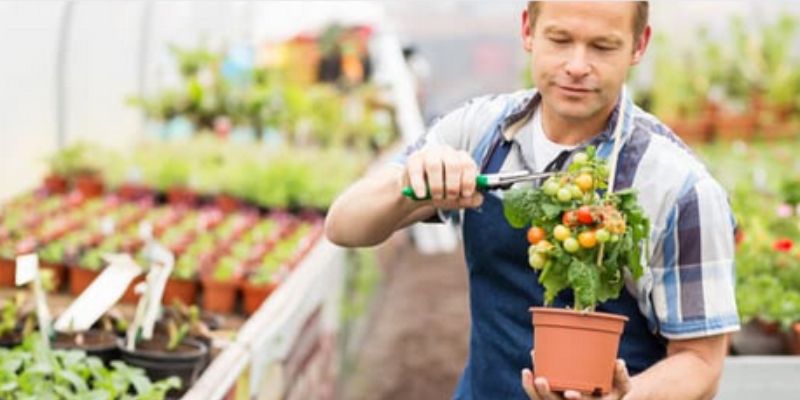
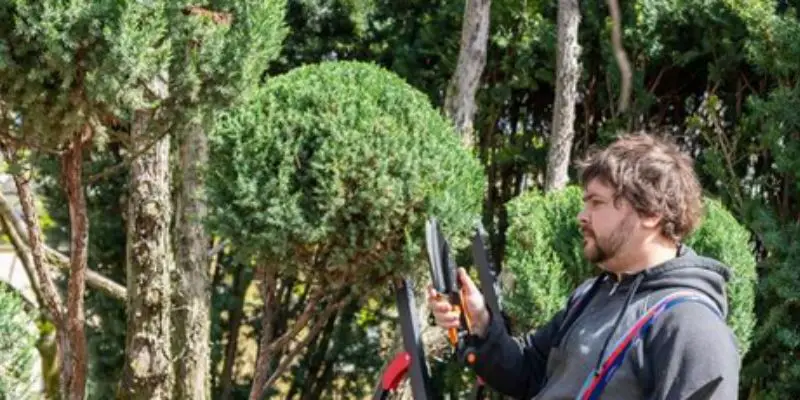
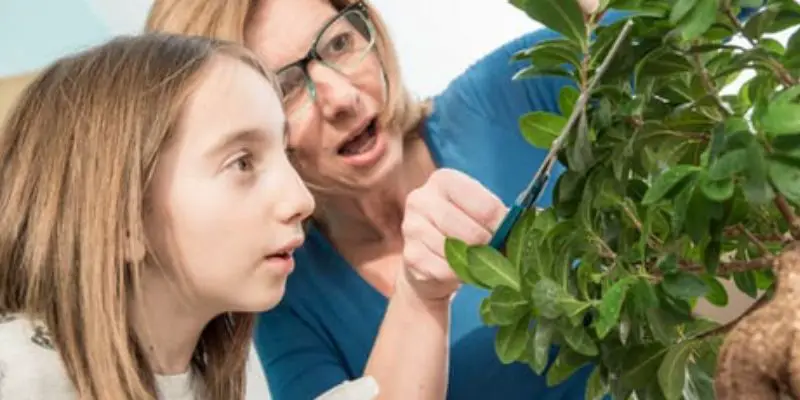


Hello Admin. I have determinate tomatoes. How do I prune them?
@Paulat. Thanks for your question. You can read my guide here on the same https://expertpruning.com/how-to-prune-determinate-tomatoes/
I followed the steps above and love the results. Thanks buddy.
Great to hear that. Feel free to check out other guides on the website and learn more.
Was looking for this. Thanks!
You are welcome.